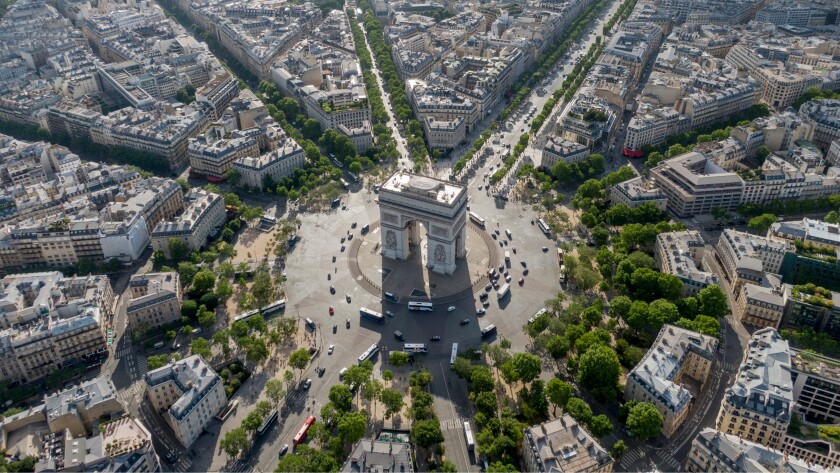Championed by scholars like Carlos Moreno, an influential urbanist and professor at the Sorbonne, the concept has garnered a great deal of new media attention in the past year. From approving essays to scathing reviews to outright conspiracy theories, the idea of the 15-minute city presents an important conversation on the future of living in urban environments.
Moreno, who coined the term “15-minute city” back in 2016, explains that his concept seeks to design urban environments where “within the distance of a 15-minute walk or bike ride, people should be able to access work, housing, food, health, education, culture and leisure.”
The aim of the 15-minute city is the creation of human-scale living environments that are cleaner and healthier and that offer a higher quality of life. And as researchers from the Congress for the New Urbanism note, it also seeks to address damages caused by rapid industrialization, the rise of the automobile and the creation of in-city highways.
As more scholars and policymakers have begun to discuss the implementation of the 15-minute city, critics began to voice concerns that this was a new idea aimed at restricting individual freedom. Jennie King, head of climate research and policy at the Institute for Strategic Dialogue in London, described a growing conspiracy theory holding that 15-minute cities are a way for the global elite to contain people in open-air prisons.
To properly address critiques and counter such conspiracy theories, it is important to understand that the 15-minute city is not a new idea. While Moreno’s research and the 15-minute-city moniker are relatively new, the concept is rooted in planning concepts dating back nearly two centuries.
The historic development of cities such as London, Paris, Philadelphia and Savannah reflect the ideas of the 15-minute city that we see urbanists discussing today. As the NPR climate writer Julia Simon describes her own experience: “Grocery store and pharmacy, five minutes. Parks, restaurants, metro stops, a hospital: all within a 15-minute walk. … My former Paris street and much of the neighborhood were built in this dense way more than 150 years ago.”
As Simon notes, the beginnings of the 15-minute city can be seen in the massive redevelopment of Paris between 1853 and 1927, which included the creation of more than 20 public parks and green spaces; a redesigned street system to alleviate traffic congestion; an improved sewer system; and development of mixed-use buildings for shops, housing and other amenities. Paris has become the gold standard for the renewed 15-minute-city movement, as over the years the city has continued to work to promote human-scale development through expanded public transit programs; redevelopment of urban spaces to support greater mixed-use projects; and the continued growth of urban parks, green spaces and community gardens.
Gardens and other green spaces have long been associated with what we now think of as the 15-minute-city movement: An early precursor to the modern model can be found in the “garden city” theory, which emerged among scholars such as Ebenezer Howard in the 1890s and early 1900s. It sought to remedy post-industrial issues quite similar to our own, including pollution, housing needs and a lack of mobility.
Key to the garden city theory was the notion of proportionate development and the goal of limiting urban sprawl, thus guaranteeing that residents would be able to fulfill most of their needs within their neighborhoods while also prioritizing efficient mobility and preservation of green spaces. Georgia Pozoukidou, a Greek professor of city planning, is among experts in the field who highlight the influence of garden cities on the development of the 15-minute-city theory and recognize it as one of the roots behind the current interest in this type of urban development.
From the development of cities in the 19th and 20th centuries to modern-day global centers like Paris and Copenhagen, it can be seen that the idea of the 15-minute city was planted many decades ago. Rather than presenting a revolutionary turn in urban planning, it is the culmination of a number of concepts developed across centuries. The renewed interest in human-scale urban planning among urbanist scholars and policymakers represented by the 15-minute city signals not a great revolution in the way we might live but rather a return to time-honored tradition.
Christopher Marco is a graduate student in public administration at Grand Valley State University in Allendale, Mich., and an administrative aide for the Grand Rapids, Mich., Community Services Department.
Governing’s opinion columns reflect the views of their authors and not necessarily those of Governing’s editors or management.
Related Articles















